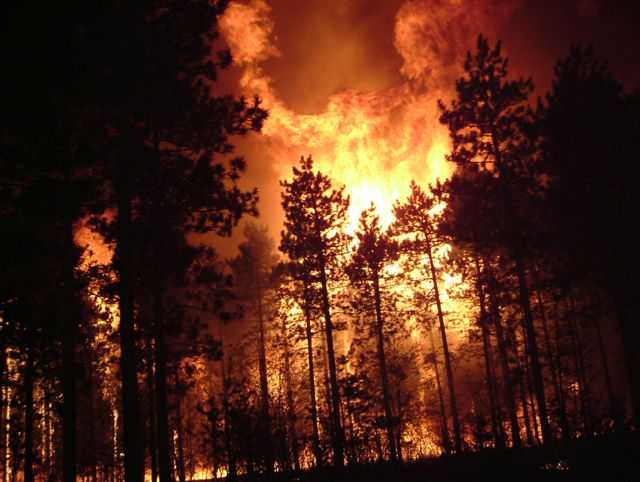 Warm, dry weather predicted for the next few days will increase fire danger across the state. So far this year 225 fires have burned 442 acres in DNR protection areas (approximately half the state); 7 buildings have been destroyed and another 120 homes and other buildings have been threatened but saved with firefighter assistance. Debris burning has been the most common cause (42 percent of all fires) even as burning permits have been suspended. Equipment has been the second most common cause (23 percent of all fires). Other minor causes include power line, railroads, campfires, and ash disposal. As the vegetation dries out on the days we don’t receive rain, expect fire danger to increase, particularly in areas where standing dead grass and other dry vegetation remains.
Warm, dry weather predicted for the next few days will increase fire danger across the state. So far this year 225 fires have burned 442 acres in DNR protection areas (approximately half the state); 7 buildings have been destroyed and another 120 homes and other buildings have been threatened but saved with firefighter assistance. Debris burning has been the most common cause (42 percent of all fires) even as burning permits have been suspended. Equipment has been the second most common cause (23 percent of all fires). Other minor causes include power line, railroads, campfires, and ash disposal. As the vegetation dries out on the days we don’t receive rain, expect fire danger to increase, particularly in areas where standing dead grass and other dry vegetation remains.

May 5th will be the 15th anniversary of the Cottonville Fire, which burned 3,410 acres in Adams County. The fire burned a swath of forest land and residential property 1.5 miles wide and 7 miles long; 90 buildings were destroyed, including 9 year-round homes, 21 seasonal homes, and 60 outbuildings. The fire was started by a person who failed to follow burning permit restrictions.
Stay aware of the fire danger in spring by checking our fire danger webpage at dnr.wi.gov (search ‘fire danger’). Put off any outdoor debris burning until burning permit suspensions have been lifted – compost or haul the material to a community collection site instead.

A chimney remains after the Cottonville Fire destroys the rest of the home.
Firewise Tip: Homeowners in high risk areas are encouraged to make weekly checks around your home for windblown leaves and needles on your roof, around your foundation, and under decks and elevated porches; keep these areas clean. The debris that collects in these places could be easily ignited by flying embers produced during a wildfire.
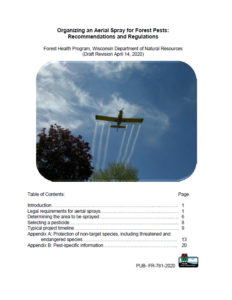

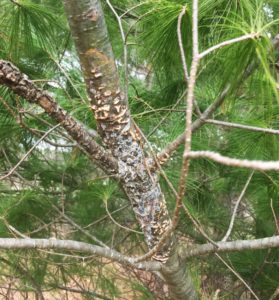
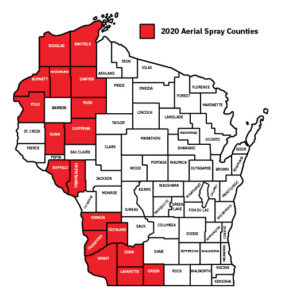


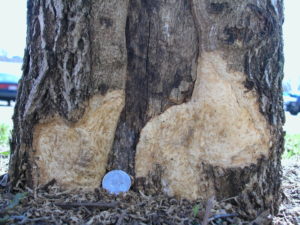
 Warm, dry weather predicted for the next few days will increase fire danger across the state. So far this year 225 fires have burned 442 acres in DNR protection areas (approximately half the state); 7 buildings have been destroyed and another 120 homes and other buildings have been threatened but saved with firefighter assistance. Debris burning has been the most common cause (42 percent of all fires) even as burning permits have been suspended. Equipment has been the second most common cause (23 percent of all fires). Other minor causes include power line, railroads, campfires, and ash disposal. As the vegetation dries out on the days we don’t receive rain, expect fire danger to increase, particularly in areas where standing dead grass and other dry vegetation remains.
Warm, dry weather predicted for the next few days will increase fire danger across the state. So far this year 225 fires have burned 442 acres in DNR protection areas (approximately half the state); 7 buildings have been destroyed and another 120 homes and other buildings have been threatened but saved with firefighter assistance. Debris burning has been the most common cause (42 percent of all fires) even as burning permits have been suspended. Equipment has been the second most common cause (23 percent of all fires). Other minor causes include power line, railroads, campfires, and ash disposal. As the vegetation dries out on the days we don’t receive rain, expect fire danger to increase, particularly in areas where standing dead grass and other dry vegetation remains.
